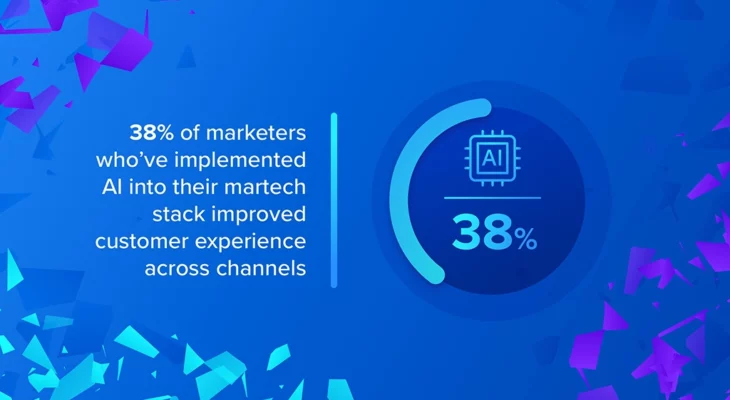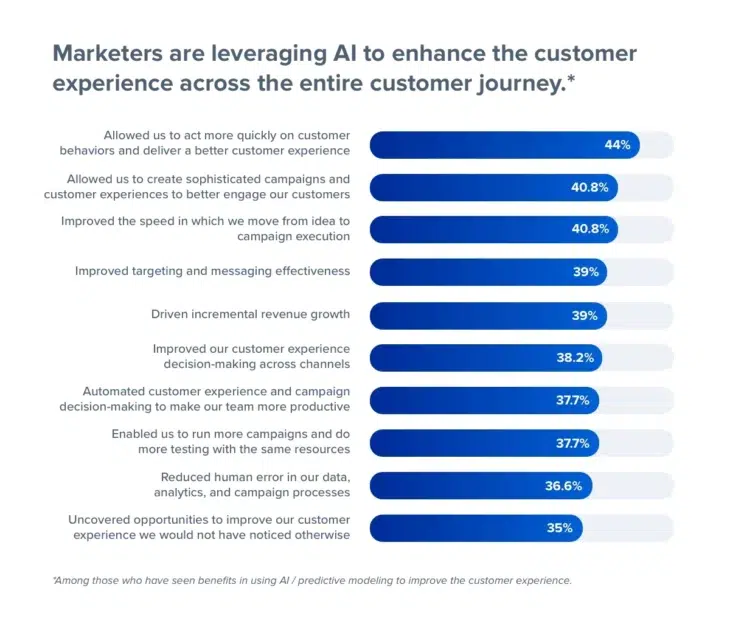Nearly 100 years ago there were, at most, three channels on which marketers could reach consumers: radio, print, and billboards. In the past 20 years, the number of digital avenues for communication has skyrocketed and with it, the number of channel-specific marketers. This is no surprise given that when each new channel popped up it’s sometimes easier to bring in a new expert rather than re-educating an existing employee. This has created a massive problem, businesses today have fractured marketing teams and disparate technology stacks. To achieve your goals and objectives, you need to have a true martech stack that runs harmoniously, otherwise, you just have a stack of marketing tools — and your team will suffer as a result.
Marketer vs. Martech: Disparate Tools Lead to Disparate Teams

DISPARATE TECH DESTROYS GREAT IDEAS
Imagine you’re an email marketer within a greater marketing team. You’ve just thought up the perfect campaign that will help retain customers and boost conversion better than anything your department has ever produced. You sync up with the heads of mobile, paid, and website. They completely agree and want to get the ball rolling — fantastic.
What’s not so fantastic? When it comes to planning and executing, each team has different perspectives, strategies, tools, and data sources they want to be thrown into the mix. This ultimately causes an increase in how long it will take to get your campaign up and running. Marketers who report working off of disparate data and platforms say it takes on average a month to get a campaign off the ground.
It isn’t surprising considering that over half of marketers report they’re storing data on multiple systems and 69% of those who store data on multiple platforms feel that friction in their martech stack hinders their organization from moving from idea to execution with new marketing strategies.
This system based on fractured tech leads to disagreements, more time spent waiting for engineering to pull data, along with a host of other problems. At Blueshift, we don’t think this has to be the norm for teams. With the correct tech behind them, teams of all shapes and sizes can succeed to do more to reach their shared goals.
EMPOWERING MARKETING TEAMS WITH DATA AND AI
While different marketing channels can require the right folks to succeed, this doesn’t mean teams need to be segmented. The most successful multi-channel teams should be collaborative in nature. High-level goals should be fully aligned, particularly because today’s customers rarely interact with only one channel when making a purchasing decision.
To create a seamless and consistent brand experience, marketers first need a solid foundation of customer data. Marketers from each channel need to operate off of the same information for each customer to pull off cohesive brand experiences.
Tools like Blueshift’s Customer Data Activation Platform (CDAP) unify every pertinent piece of data into a singular source of truth — the Single Customer View. This view combined with our patented AI automatically builds self-driving customer journeys that adapt to each user. The end result? More harmonious journeys that optimize to fit your unique goals and business model.
Don’t just take our word for it, 38% of marketers who’ve implemented AI into their martech stack credit it with automating processes in order to make teams more productive and the ability to run more campaigns and do more testing with the same resources.
Ready to see how much stronger your team can be with the right tech? Download our full Marketer vs. Martech study, and then reach out to the Blueshift team for a demo of the platform.



